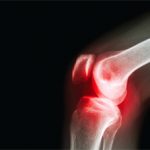In several U.S. states, Blue Cross/Blue Shield and other insurers have dropped or are considering dropping coverage of hyaluronic acid injection—or viscosupplementation—for patients with knee osteoarthritis. The decision appears to be based on guidelines published by the American Academy of Orthopaedic Surgeons in 2013, which at that time specified that research had not found hyaluronic acid injection “effective at significantly reducing pain or improving function.”1
However, Charles Degenhardt III, MD, a rheumatologist based in Savannah, Ga., says the guidelines were never intended to serve as the basis for coverage determination.
David Jevsevar, MD, MBA, chair of the AAOS Council on Research and Quality, told Medscape in 2013: “Even though we say in the guidelines that we don’t want the guidelines used for coverage-based determinations, our fear is that payers will do that.”6
Why Is the ACR Stepping In?
Those same guidelines acknowledge that some patients do report pain relief following injection of the naturally occuring joint lubricant. The ACR’s Committee on Rheumatologic Care (CORC) is taking steps to protect patient access to the treatment.
“As common as osteoarthritis is, we have so few options for treatment, and we feel we need to keep all available options open and have it be an individual decision made in conjunction with our patients,” says Dr. Degenhardt, who is also a CORC member.
The treatment may also help delay a patient’s need for surgery, “which we perceive as a benefit,” Dr. Degenhardt adds.
A Critical Alternative
Viscosupplementation is among the options recommended in the ACR’s 2012 osteoarthritis guidelines.2 In 2015, a meta-analysis published in Annals of Internal Medicine examined 137 randomized, controlled trials of patients with primary knee osteoarthritis, comparing treatment options for pain. It found hyaluronic acid injection to be the most efficacious when weighed against other treatments, including acetaminophen, intra-articular corticosteroids, naproxen, celecoxib and and other pharmacologics.3
Further, although viscosupplementation is not a frontline option for most osteoarthritis patients, it remains a critical alternative for some, especially those unable to tolerate other treatments, Dr. Degenhardt explains. For example, steroid injections in patients with type 2 diabetes can cause spikes in blood sugar that may lead to hospitalization. Patients with chronic kidney disease can’t tolerate non-steroidal anti-inflammatory drugs (NSAIDs). Others are not candidates for surgical repair or want to try non-pharmacologic options first, like strengthening and weight loss, due to their complex medical conditions.
“Viscosupplementation is not at all meant to replace other options,” says Dr. Degenhardt, noting that it is a safe treatment. But “every patient is different, every patient decision is different, and what we’re trying to do is advocate for the options that are out there.”
The ACR Position Statement
The ACR issued a position statement to support viscosupplementation in 2015 and anticipates updated OA guidelines will be sent to the Board of Directors in early 2019. In Alabama—one state in which coverage has been dropped—the Alabama Society for the Rheumatic Disease (ASRD), with support from the ACR, issued a letter to Blue Cross/Blue Shield requesting reinstatement.4,5
Since 2015, the ACR’s Insurance Subcommittee (ISC) has continued to regularly respond to viscosupplementation policies; the group has sent eight letters to payers, two of which were sent last May and June.
Dr. Degenhardt hopes rheumatologists, experts in the treatment of osteoarthritis and the ACR can work together with payers to help devise solutions. “We know viscosupplementation is not necessarily the magic bullet, but it should be an option.”
Kelly April Tyrrell writes about health, science and health policy. She lives in Madison, Wis.
References
- American Academy of Orthopaedic Surgeons, 2013.Treatment of Osteoarthritis of the Knee, 2nd edition. http://www.aaos.org/research/guidelines/OAKSummaryofRecommendations.pdf.
- Hochberg MC, Altman RD, April KT, et al. American College of Rheumatology 2012 recommendations for the use of nonpharmacologic and pharmacologic therapies in osteoarthritis of the hand, hip, and knee. Arthritis Care Res (Hoboken). 2012 Apr;64(4):465–474.
- Bannuru RR, Schmid CH, Kent DM, et al. Comparative effectiveness of pharmacologic interventions for knee osteoarthritis: A systematic review and network meta-analysis. Ann Intern Med. 2015 Jan 6;162(1):46–54.
- ACR Committee on Rheumatologic Care. American College of Rheumatology position statement on intra-articular hyaluronic acid injection in osteoarthritis of the knee. (n.d.) https://www.rheumatology.org/LinkClick.aspx?fileticket=tBiSQaE-9Ds%3d&portalid=0
- American College of Rheumatology, Alabama Society for the Rheumatic Diseases Letter to Blue Cross/Blue Shield. 2015 Mar 4. https://www.rheumatology.org/LinkClick.aspx?fileticket=umDeOAyiNUk%3d&portalid=0
- Kelly J. New AAOS knee OA guidelines likely to be controversial. Medscape. 2013 June 19. https://www.medscape.com/viewarticle/806564.


